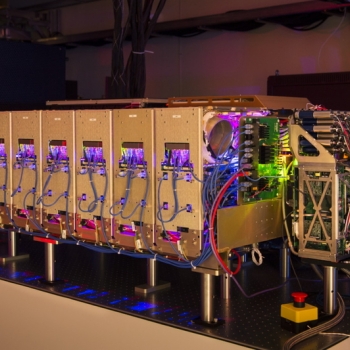Coherent Beam Combination in a Laser Oscillator Using Active Phase Control

High-power lasers find extensive applications in medicine, communications, manufacturing, and research, but harnessing high power in lasers can be a complex challenge because of technical limitations and power scalability issues often faced with traditional designs. Coherent beam combining (CBC) of laser gain elements has emerged as a potential solution to achieve high output power in a diffraction-limited beam while avoiding thermal and nonlinear problems related to high power density within the gain medium. Current approaches often rely on passive beam-combining technologies, which face scalability issues as they tend to impose stringent synchronization requirements. These limits render passive beam-combining technologies less effective in achieving high output power consistently. There is a noticeable degradation in the beam quality and an inability to control the phase, making active CBC with an external resonator a more efficient solution.
Technology Description
This innovation involves coherent beam combining of multiple semiconductor laser gain elements to achieve significantly high output power in a diffraction-limited beam. The system is characterized by an active beam-combining system that brings together the optical beams emitted by the laser gain elements and consolidates them in an external resonant cavity setup. This configuration consists of a beam combiner that forms a singular coherent output beam from the multiple laser gain elements and a photodetector that monitors this power. The phase of each optical beam from the laser gain elements is regulated via a processor that uses the photodetector output. What makes this technology stand out is its potential for scalability. The processor makes real-time adjustments based on photodetector readings, using a stochastic parallel gradient descent (SPGD) algorithm for active phase control, and optimizes the power of the coherent output beam. Additionally, the technology enables a combining efficiency of about 81%, achieving an upper limit of 90% or more, showing a clear superiority over passive-phasing systems that are limited by scalability constraints.
Benefits
- Increase in output power because of active beam combining
- Scalability beyond the limits imposed on passive-phasing systems
- Efficient process control through the SPGD algorithm
- High power efficiency, with an 81% combining efficiency capable of reaching 90% or more
Potential Use Cases
- High-power laser manufacturing for industrial cutting and welding
- Advancements in scientific research requiring high-power lasers
- Medical applications for surgical and diagnostic tools
- Communication systems needing high-power laser sources
- Defense systems utilizing high-power lasers for long-range detection and tracking